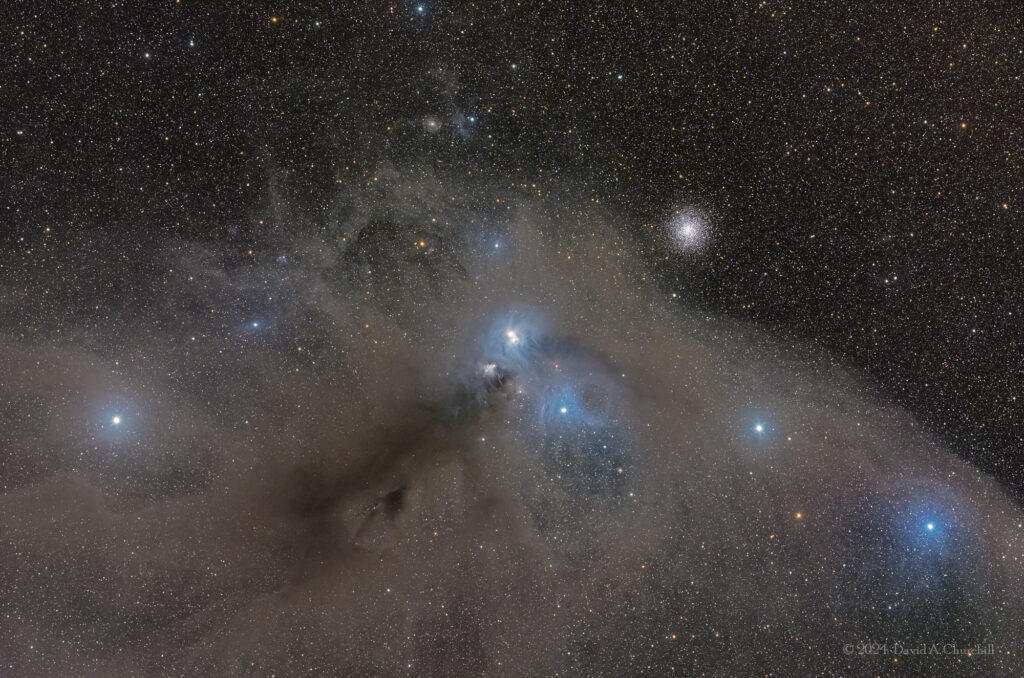NGC 6729 (Caldwell 68)
Reflection & Dark Nebulae, Corona Australis
- Description
- Technical
- Links
NGC 6729 (also known as Caldwell 68) is a reflection/emission nebula and part of the Corona Australis Molecular Cloud in the constellation of Corona Australis. It was discovered by Johann Friedrich Julius Schmidt in 1861. This fan-shaped nebula opens from the star R Coronae Australis toward the star T CrA to the south-east. R CrA is a pre-main-sequence star in the Corona Australis molecular complex, one of the closer star-forming regions in the galaxy at a distance of 130 pc. NGC 6729 is a variable nebula which shows irregular variations in brightness and in shape.
Close to NGC 6729 are NGC 6726, 6727. These are Reflection nebulae and shine by the light of embedded young stars. This is one of the closest star-forming areas to us, at about 420 light-years distance. IC 4812 is also a reflection nebula and contains a binary star. The object was discovered by DeLisle Stewart on August 4, 1899.
Close to NGC 6729 are NGC 6726, 6727. These are Reflection nebulae and shine by the light of embedded young stars. This is one of the closest star-forming areas to us, at about 420 light-years distance. IC 4812 is also a reflection nebula and contains a binary star. The object was discovered by DeLisle Stewart on August 4, 1899.
Telescope: Astro Physics 155EDF (TCC) f5.4
Mount: Astro Physics 1600GTO
Camera: FLI PL29050 / CFW2-7
Guider: Agena Starguide II / ZWO ASI178MM
Filters: Astrodon II 50mm LRGB
L: 9×10 mins = 90 mins, R: 21×10 mins = 210 mins, G: 13×10 mins = 130 mins, B: 7×10 mins = 70 mins
Total Imaging Time: 8h 20m
Data Imaged remotely on 4 nights during May 2024.
Imaged from Observatorio El Sauce, Chile, in partnership with Fred Espenak.
Data acquisition & Processing by David Churchill.
None


